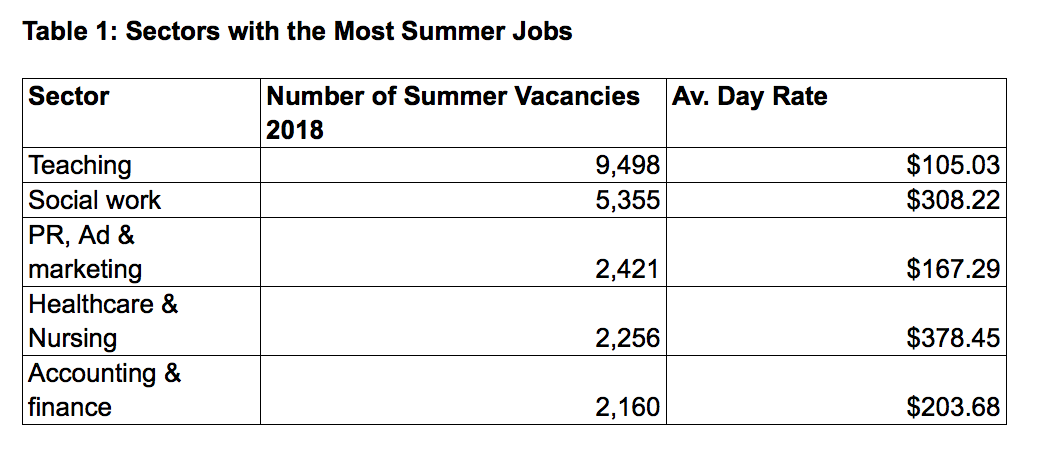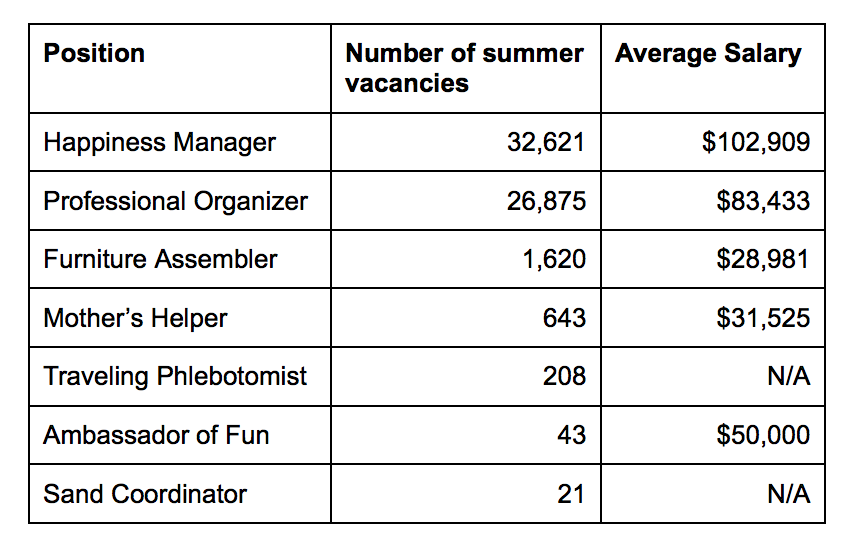The modern landscape
It’s a jungle out there.
Technical recruiting is perhaps more complicated than it’s ever been at any point in the legitimate global history of sourcing and recruiting.
First, you have the rise of the tech stack. There are dozens upon dozens of places to find candidates, and hundreds of ways to organize your information about them.
Secondly, also because of the rise of the tech stack, you have increasingly specialized roles that you need to place for — oftentimes roles that didn’t even really exist 2-3 years ago. 62% of CIOs struggle to find the right tech talent they need, per Harvey Nash and KPMG, and all of them list it as a major bottleneck to keeping up with the pace of change.
Third: advice is everywhere. Who should you be listening to?
Fourth: 1.3M new software jobs in the U.S. alone (upwards of 5.5M globally) will exist by 2020, but the skills gap is only expected to widen. That’s going to be another crush on technical recruiters.
And finally: with tech unemployment relatively low (or non-existent) in most urban centers, there needs to be increasing competitive differentiators apart from simply salary. Companies can’t afford to keep raising the number, even for some of the best candidates. As a result, technical recruiters are having to move beyond simply selling the role to selling the employer brand.
What it all means
It’s not enough to simply be a “technical recruiter” anymore. You need to up your sourcing and recruiting game. You need to find a warp to a new level. It’s time to elevate. That’s what this guide is about.
Step 1 of Elevation: Change how you hunt
The big fish for the last few years have been LinkedIn, Indeed, GitHub, StackOverflow, Glassdoor, etc. Interestingly, many of those companies are beginning to fall under similar corporate ownership. We’re not here to analyze M&A, though.
But the big fish, while effective, aren’t always the best place to hunt for top technical talent. They reside on different sites, niche job boards, and places that might not have been around even 10 months ago.
One such “talent pool” is the CodeFights Recruiter platform. Unlike traditional sources, CodeFights starts with over 1 million tested and vetted engineers. At its core, CodeFights is a community of developers seeking to better themselves through participation in interview practice and real world company challenges. As participants engage with challenges through the platform… CodeFight’s machine learning evaluates the participant’s skill level and knowledge of programming topics.
As a recruiter, you dive into this innovative talent pool by utilizing the CodeFights Recruiter. CodeFights Recruiter harnesses the power of machine learning to inform its proprietary candidate matching algorithm, and then adds a human touch to verify the algorithm recommendations to match the engineer’s preferences with your company’s requirements. For example, if the candidate only wants to work at an enterprise company, then CodeFights won’t submit that candidate to you even though the algorithm may identify that candidate as a technical match for your position. Unlike traditional passive recruiting, which relies heavily on the manual outreach process, CodeFights brings the candidates to you that have signaled they are looking for a new position so the candidates are far more responsive.
In fact, recruiters who use the CodeFights system enjoy a much higher candidate response rate than those who don’t — 5x the typical response rate of passive candidates, to be precise.
Step 2 of Elevation: Change how you work internally
When you get a new requisition, sit down with the hiring manager right away. Instead of letting them give you a wish list of qualifications, make them drill down to the basics. What skills and qualities does a candidate absolutely need to have in order to succeed in the role? The list you come up with will be your guide when you’re recruiting for the role.
If there’s anything in the list that you’re not familiar with, now’s the time to brush up. You don’t have to be an expert on all of the technologies and skills. But you should have a base-level understanding.
Some ways to cultivate that understanding:
- Ask people with similar roles in your company
- Ask the hiring manager
- Use the first interviews you do to understand the role better, then use later interviews to drill down on what you learned from earlier interviews
- Research it yourself
- Ask former colleagues
- Use a service that starts with pre-qualified candidates so you don’t waste time with unqualified candidates
The second major way you need to change how you work isn’t just communicating better with hiring managers — it’s being more effective and freeing more time for value-add work. A lot of recruiting and sourcing tends to be task-driven, top-of-funnel activity that could (unfortunately for you) easily be automated. But, a-ha! Those tasks can be automated and you can remain value-add to your organization.
To help recruiters like you free up more hours in the day, our team at CodeFights is shaking up the staffing industry through the power of skills-based recruiting. Unlike traditional recruiting that targets passive candidates through tremendous manual effort, the CodeFights Recruiter platform starts with a network of pre-qualified developers who are actively exploring new opportunities.
Our proprietary sourcing algorithm serves up a sorted list of matched talent, based on skills alignment with your needs. Our talent managers verify the skills-based matching and ensure that candidates are right for your company. For example, if you’re company is a startup and the candidate wants to work for an enterprise company, then that particular candidate would not be a match for your company even though they may have the skill set and experience that your role requires.
CodeFights also simplifies your interviewing process. Our interface is custom-tailored for hiring programmers, delivering a one-stop solution for hosting and recording interviews, posing coding questions or tasks (in 40 different programming languages), comparing candidates on a level playing field, and saving all the data so you can make more informed hiring decisions.
CodeFights testing solution also allows you to create custom tests. The reason why this is key is because you can create real-world tests that match the expectation of the position and not just test for data structures and algorithms. For example, you can create a test for backend engineers that includes a task to see how the candidate would work with an API and backend database. The other advantage of creating custom tasks is fighting plagiarism – your custom task won’t be readily available on the internet. If at some point your custom task is ‘made more public’ the CodeFights’ plagiarism detection will recognize and flag that immediately.
Step 3 of Elevation: Time to think about candidate experience
At this point, here’s what we’ve tried to do:
- Move you towards new sources for finding talent
- Improve your effectiveness internally on communication and time management
You have a good baseline now to really start sourcing the best people and working better on your team (and with your hiring managers). It takes time to master, of course.
But as you’re doing this, you need to be focusing on candidate experience too — remember what we said earlier about salary issues? Add to that this fact: many tech A-Players just want a great environment for learning and coding and hanging out with like-minded people. That’s all part of candidate experience. You need to be showing them that your place is the place.
There are a few different best practices for candidate experience in technical recruiting, all of which are inherently logical in terms of treating people how they want to be treated during a job search process:
Don’t drag your feet: 47% of candidates who decline a job offer do so because they’ve already accepted a different offer, according to MRINetwork. Move faster. Don’t get analysis paralysis. Don’t delay decisions. (You shouldn’t rush into decisions either, but if you’re following the rest of this list, you should be OK on who you’re arriving at.)
Close the loop with candidates: If you ghost a candidate, or keep them on the hook for a long time, that’s a bad candidate experience. And who knows who they’ll tell about their poor experience? The story will spread.
Offer constructive feedback: According to LinkedIn, 94% of applicants appreciate feedback if you don’t move forward with them. Letting them know why is instructive and enhances their experience, and giving feedback shows that you value them. Again, even if they’re not the right fit for you now, they might be in the future. (If you use AI tools and candidate rediscovery, they might be the right candidate the next time that department has an opening.
Ask for the candidate’s thoughts: … and then listen. Your company should iterate its process continually based on candidate feedback and outcomes.
Step 4 of Elevation: As you source, focus on skills and not degrees/backgrounds
Programmers with non-traditional backgrounds don’t have the educational qualifications that recruiters usually look for. Their resumes and their LinkedIn profiles will reflect this, often placing much more emphasis on personal or open-source projects than on educational or work experiences. But these candidates can be just as skilled as ones who have the “right” markers! This means they can be the solution to the tech talent shortage facing the industry today.
If companies only consider candidates with traditional pedigree markers to fill their open roles, then their pool of available prospects will be fairly small. And the competition for these pedigreed candidates is fierce. Of course, none of this is to say that people who do have these credentials aren’t great candidates! But when companies limit themselves to just these people, they miss out on amazing “hidden gem” candidates.
Recruiters need to be able to reframe how they think about finding prospects and what to look for when when they’re considering candidates. The best way to do this? Focus on skills, not on credentials.
People can (and do) list any old skill on their resumes and LinkedIn profiles, so you can’t rely on them to tell you the full story. It’s crucial to be able to verify these skills before moving forward with a prospect. Phone screens, take-home projects, or interview tasks can all help verify skills. But the best, and most efficient, way of verifying skills is at the very top of the funnel, even before a phone screening. A coding test that is emailed to prospects and delivers automatic results back to the company, like those sent from CodeFights Recruiter Test, can streamline the recruiting process because recruiters are able to verify skills right away.
Elevate, Step 5: Focus on soft skills
This is less prevalent among technical recruiters, but important.
Oftentimes in a “road map” strategy model, your technical talent will have to interact with a wide variety of teams — not just other engineers and coders.
So, you need to make sure these candidates have some degree of social skill or ability to communicate effectively interpersonally with all different types of personalities.
No “soft skill” assessment is going to be completely scientific, no.
Well, thankfully First Round Review interviewed dozens of CTOs about how to hire top technical talent, and this stands out:
Institute role plays in your interview process. For every engineering manager role, have the candidate sit with a member of the engineering team and play out a scenario 1:1. It can be about a technical process, an argument about prioritization or giving feedback with both criticism and praise. It’s an effective way to test softer skills and replicate what you’ll get in a ‘real’ situation. Of course, using your engineers’ time like this may seem expensive, but it’s more costly to bring on an engineering leader who doesn’t jive with your team. Plus, after doing it for a few years, you’ll find it becomes a rite of passage and engineers like participating in them.
Test for both technical skills and soft skills, especially in manager roles. It’s crucial.
Elevate, Step 6: Be flexible and hire adjacent skill sets
If you’re having a tough time sourcing specific roles, consider roles with adjacent skills — for example, the Python language and Ruby framework have enough overlap that someone who’s skilled in one can typically master the other.
Now, of course, this scares hiring managers — because they’re afraid they won’t get someone who can hit the ground running on a big project.
You can overcome that fear by working through these steps:
Do Your Homework: You’re probably not the first technical recruiter who has struggled with this exact same scenario. In today’s world of countless Saas tools, smartphone apps, and machine learning, there could be dozens of articles that explore the feasibility of placing hard to find developers. As with most things these days, doing a little online research could be the right place to start.
Assess the Opportunity: Your gut tells you there are more Python experts to choose from than Ruby on Rails developers. Based purely on LinkedIn developer group membership data (132K vs. 69K), you may be correct. What other data points could you use to support your theory?
Talk to Colleagues that You Trust: Does your company already have a few Ruby on Rails developers on the payroll? If so, do you have a good enough relationship with any of them to pick their brains about your idea? What challenges do they foresee?
Analyze the Opportunity Costs: Even if your idea has merit, the first objection you’re likely to hear will involve the time and cost of training. Hiring an engineer with adjacent skill sets will yield additional onboarding considerations. You’ll need to weigh this reality against the opportunity cost of prolonged vacancy. Would your developers rather have someone now who might require training, or would they prefer to wait six more months for the “perfect match?”
Elevate, Step 7: Put it all together
At this point, here’s what you should be putting together:
- Source from new places
- Organize yourself internally better
- Focus on candidate experience
- Focus on the skills of the candidates, not their pedigree
- Evaluate soft skills as well
- Consider adjacent skill sets
Remember: you’re looking for diamonds, not dirt. The focus needs to be on quality, not quantity. So don’t worry about how busy/slammed you are personally — that’s often tied to task work. Focus on what you’re doing and how it’s value-add. Pay that same value forward to the candidate in terms of how you communicate, explain the organization, assess them, etc. If the process is rooted in value instead of busy work/quantity, the candidates will become quality employees. That’s the ultimate goal of technical recruiting, even in the most complex landscape we’ve ever seen.
Shoutout to our pals at Codefights for sponsoring this awesome content.



















